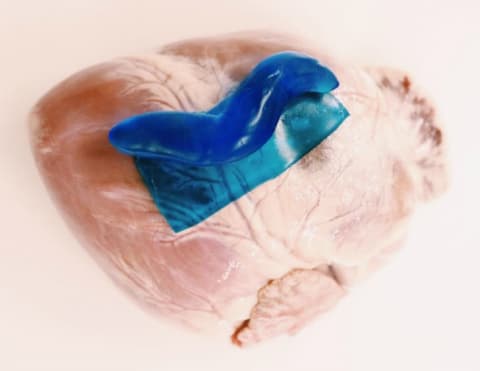Slug Slime Inspires Super-Sticky Surgical Sealant

Some damp things, like sweaty thighs, only want to stick together. Others, like wet organs, are far less cooperative. But now scientists have devised a clever way to make them play nice: a two-part glue inspired by slug mucus. The team reported their results in the journal Science.
Surgical adhesive has a big job. It has to be safe, and it has to be able to stick to living tissue, even when that tissue is slick and wet with blood. So far, engineers have had a hard time finding glues that meet all these criteria.
That may be because, previously, they hadn't spent enough time lying on their bellies in the backyard. Ordinary slug mucus is a marvel of chemistry and physics. It's a liquid crystal, neither liquid nor solid. It protects the slug from pathogens, helps it glide along the ground, and can give off chemical messages to other slugs nearby.
And that's just the basic package. Individual slug species also brew special slime blends to suit their own needs. One European species, the dusky arion (Arion subfuscus), copes with threats by mucus-gluing itself to a surface and simply refusing to budge. Its slime is absorbent, strong, and super-sticky. In short, it's a surgeon's dream.
Previous studies of A. subfuscus mucus found that the slime derives its power from its unusual, two-layered structure, with a tough matrix covered with positively charged proteins.
To recreate this magical goo, experts in bio-engineering teamed up with material scientists and heart surgeons. They created their own version of the slime: a rugged hydrogel matrix beneath a sticky layer of large, positively charged molecules.
The researchers put the new glue through an impressive battery of product tests, trying it out on wet and dry pig parts, including skin, cartilage, hearts, arteries, and livers. They used it in rats that had recently undergone surgery, on mice with liver hemorrhages, and on pig hearts. In each case, the glue outperformed existing medical adhesives while causing no damage to surrounding tissue.

In a statement, co-author Adam Celiz, now at Imperial College London, said the slug glue has "wide-ranging applications."
"We can make these adhesives out of biodegradable materials, so they decompose once they've served their purpose. We could even combine this technology with soft robotics to make sticky robots, or with pharmaceuticals to make a new vehicle for drug delivery."
Donald Ingber is founding director of Harvard's Wyss Institute for Biologically Inspired Engineering, where some of the study researchers are based. He was not involved with this study, but praised the team for their ingenuity: "Nature has frequently already found elegant solutions to common problems; it's a matter of knowing where to look and recognizing a good idea when you see one."